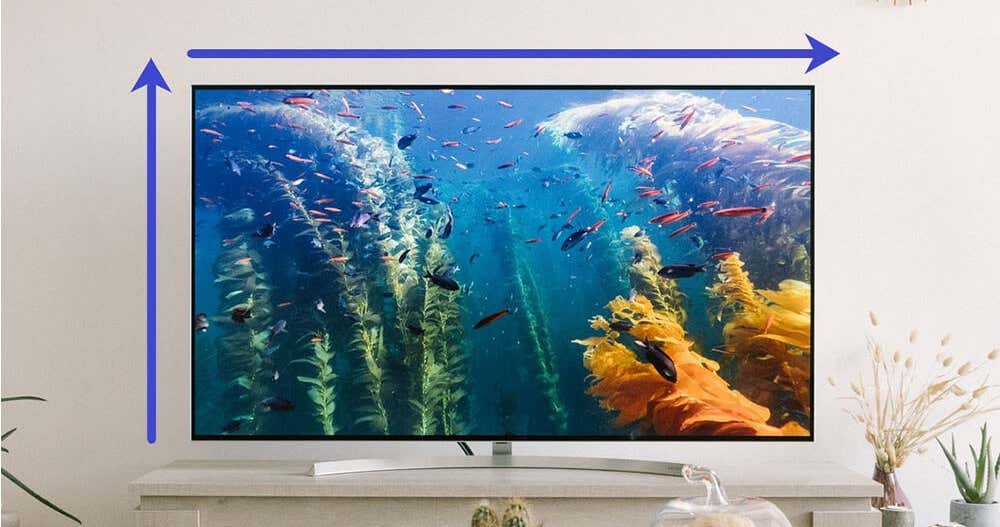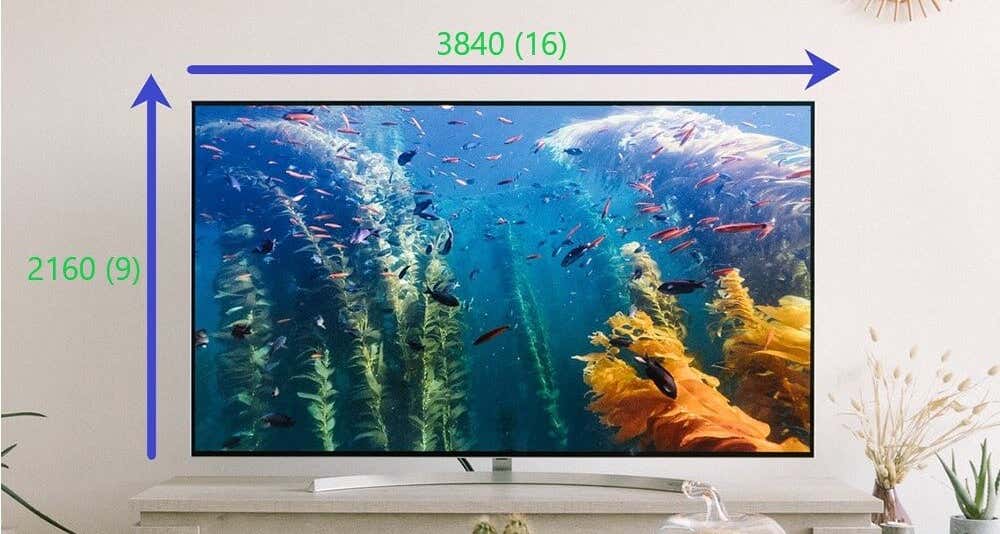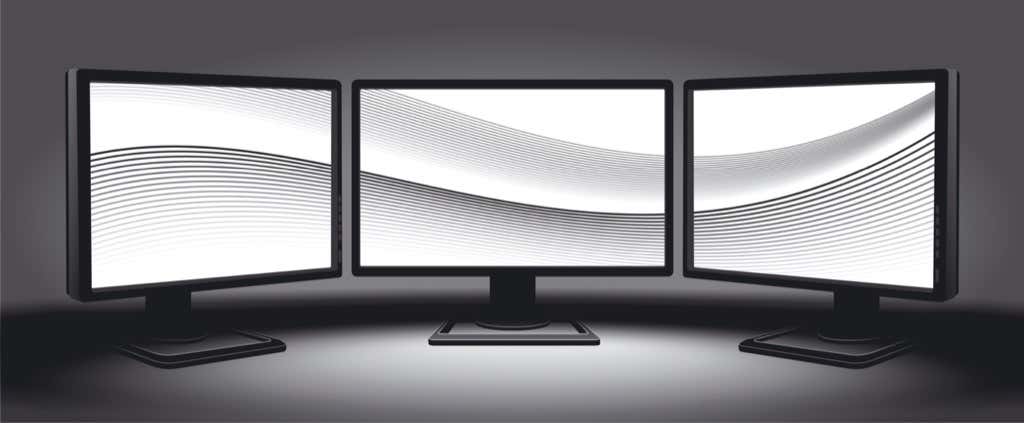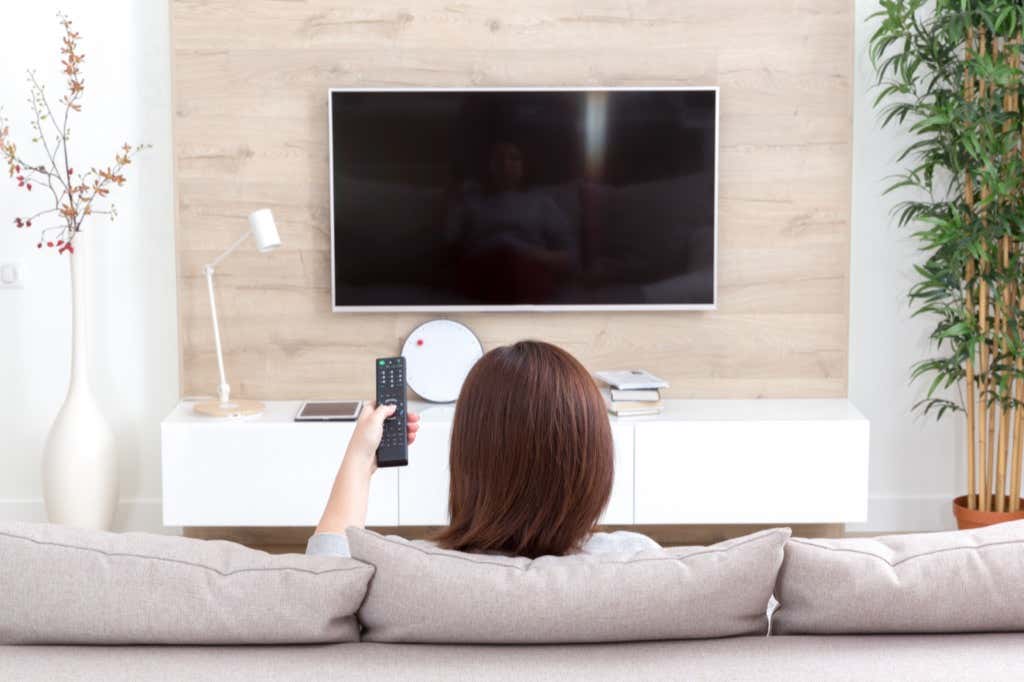Buying a new screen is exciting, but the jargon-heavy spec sheets can make you feel overwhelmed. One of the primary specifications that defines your viewing experience is the screen’s resolution.
If you’ve tinkered with your Windows display settings in the past, you’ve probably come across the word resolution. Changing the resolution can help If you have an overscan issue when using your HDTV as a monitor or want to improve your display quality. But what does resolution mean?
What Does Screen Resolution Mean?
Resolution is a measure that describes the clarity of an image displayed by the screen. The term is used for both hardware components like screens (TVs, monitors, and mobile screens), and software components like images.
Screen resolution is expressed as the number of pixels that a screen produces horizontally and vertically (i.e., width x height).
Instead of writing the resolution as width x height, most spec sheets use terms like 720p (HD), 1080p (Full HD), and 4K. These are the most commonly used resolutions, at least currently, though there are several other resolutions like 1440p, 2K, and 8K, as well.
All these resolutions can be expressed as width x height:
- 480p: 640 x 480 pixels (SD)
- 720p: 1280 x 720 pixels (HD)
- 1080p: 1920 x 1080 pixels (Full HD)
- 2K: 2048 x 1080 pixels
- 1440p: 2560 x 1440 pixels
- 4K: 3840 x 2160 pixels
- 8K: 7680 x 4320 pixels
We’ll circle back to resolution, but let’s first talk about what pixels are.
What Are Pixels?
A pixel is a dot on your screen. Collectively, all the pixels on your screen make up the images that you see on your TV or monitor. If you look real close, you can see each pixel as tiny dots on the screen.
The more pixels there are on your screen, the better the quality of the image. This is why a higher resolution translates to better, crisper images.
For instance, a 4K resolution screen has 3840 pixels from left to right, and 2160 pixels from top to the bottom. This means the ratio of horizontal to vertical pixels (i.e., aspect ratio) is 16:9.
Almost all screen resolutions (except a few like 4K Ultra HD) have an aspect ratio of 16:9. This ensures uniformity so the images on your screen don’t appear stretched or distorted, or have any padding around the border.
Most Common Resolutions
720p, 1080p, and 4K are currently the most common screen resolutions today. Knowing a little about these resolutions is helpful when you’re trying to make an informed decision about your new screen.
What is 720p resolution?
A 720p (i.e., high definition) screen has 1280 x 720 pixels, which means it has a total of 921,600 pixels. 720p was the industry standard about a decade ago, but has since been replaced by 1080p. However, 720p is still used in a lot of small-sized screens.
What is 1080p resolution?
A 1080p (i.e., Full HD) screen has 1920 x 1080 pixels, which translates to 2,073,600 pixels. That’s over twice as many as on a 720p screen. If you’re confused between 720p and 1080p, it’s best to pick 1080p. It’s currently the dominant resolution in which most of the online and TV content is produced.
What is 4K resolution?
A 4K screen has 3840 x 2160 pixels or a total of 8,294,400 pixels. That’s 4x the pixels on a 1080p screen, or 9x the pixels on a 720p screen. However, 4K screens can also be Ultra HD, which is different from 4K.
4K screens have been around for a while, but have only recently entered the mainstream. This is because they used to be fairly pricey, but they’re now available at a much more pocket-friendly price.
Things to Consider When Choosing a Resolution
Now that you know what resolution means, you may be curious as to what factors you should consider when choosing a screen resolution. The two primary things you should consider are your screen’s size and your viewing distance from the screen.
Screen Size
If you’re buying a small screen, say 24 inches, anything beyond 1080p won’t make a significant difference. If you’re buying a 65-inch screen though, you should choose 4K as a minimum.
The reason? Pixel density.
Pixel density is the number of pixels packed in one inch of the screen, and is measured using a metric called pixels per inch (PPI). It’s important for a large screen to have higher resolution, so the pixel density is high enough to display good quality images.
For instance, a 65-inch TV with 4K resolution has a ppi of about 67. Compare that with a 24-inch TV with 1080p resolution, which has a higher ppi of about 91. Even though the 65-inch TV has a higher resolution, the images will appear crisper on the 24-inch TV because of higher pixel density.
If you’re buying a TV, a ppi of 90-110 is considered the sweet spot. For a monitor, you should aim for a higher ppi of about 200-250 or more, depending on your viewing distance. You can use an online ppi calculator for comparing screens with different sizes and resolutions.
Viewing Distance
Another factor you should consider is the viewing distance, which depends on what you use the screen for. If you’re buying a TV, you’ll probably view it from a greater distance than a monitor. This means you can opt for a slightly lower ppi.
However, if you’re buying a computer monitor, your viewing distance from the screen will be relatively less. A higher ppi will make sure that you don’t see pixels on your screen while you’re using it.
Ready for an Upgrade?
If you’ve had your screen for a while, and it’s time for an upgrade, aim for 1080p as a bare minimum. If you don’t have a budget constraint and are buying a medium or large screen, consider investing in a 4K screen.
When you’re spending a lot of money buying a 4K screen, it’s natural to worry about how long it will stay relevant. However, 8K is far from entering the mainstream. Though available, it’s impractically expensive.





